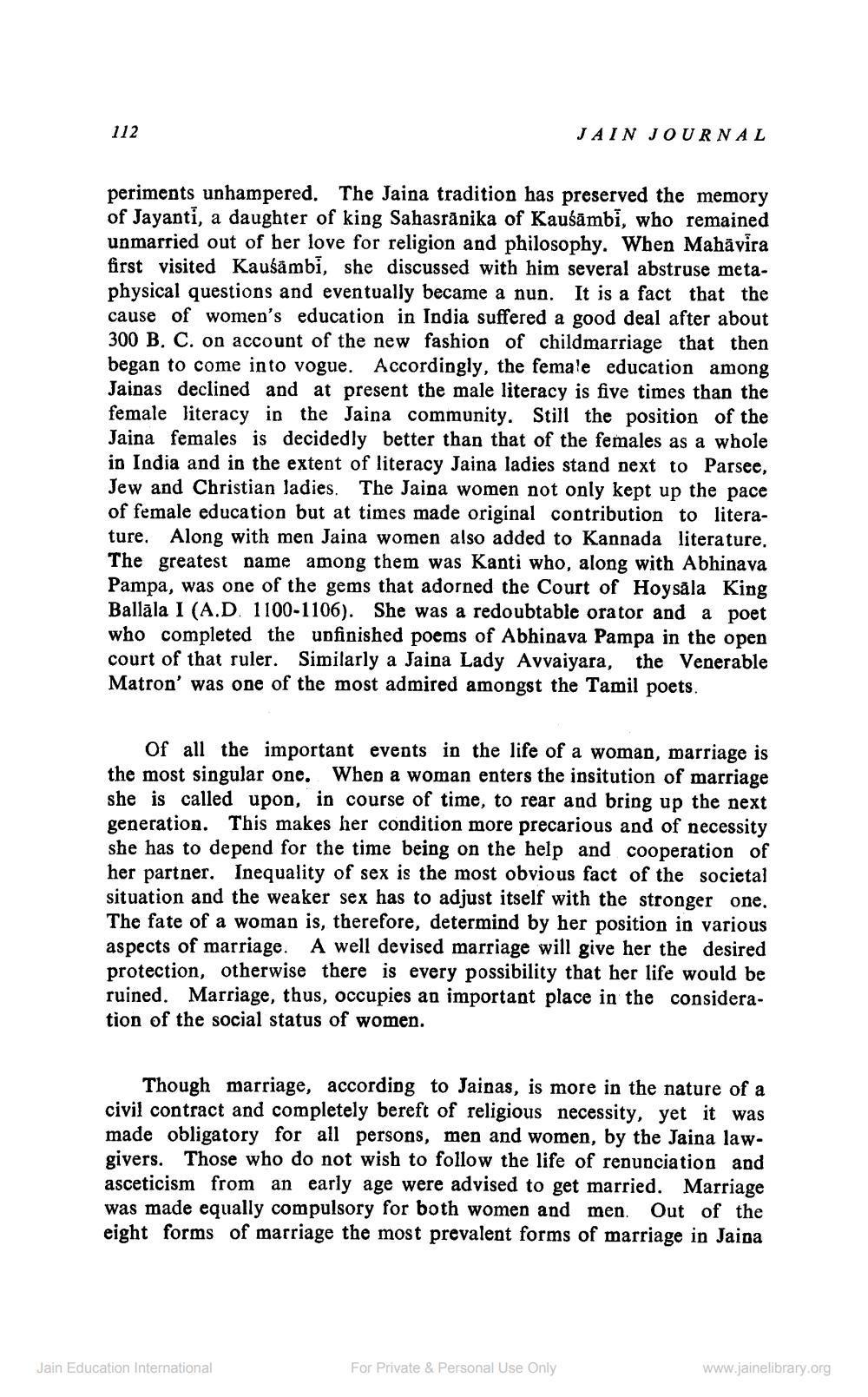________________
112
JAIN JOURNAL
periments unhampered. The Jaina tradition has preserved the memory of Jayanti, a daughter of king Sahasrānika of Kaušāmbi, who remained unmarried out of her love for religion and philosophy. When Mahāvira first visited Kausâmbi, she discussed with him several abstruse metaphysical questions and eventually became a nun. It is a fact that the cause of women's education in India suffered a good deal after about 300 B. C. on account of the new fashion of childmarriage that then began to come in to vogue. Accordingly, the female education among Jainas declined and at present the male literacy is five times than the female literacy in the Jaina community. Still the position of the Jaina females is decidedly better than that of the females as a whole in India and in the extent of literacy Jaina ladies stand next to Parsee, Jew and Christian ladies. The Jaina women not only kept up the pace of female education but at times made original contribution to literature. Along with men Jaina women also added to Kannada literature. The greatest name among them was Kanti who, along with Abhinava Pampa, was one of the gems that adorned the Court of Hoysala King Ballāla I (A.D. 1100-1106). She was a redoubtable orator and a poet who completed the unfinished poems of Abhinava Pampa in the open court of that ruler. Similarly a Jaina Lady Avvaiyara, the Venerable Matron' was one of the most admired amongst the Tamil poets.
Of all the important events in the life of a woman, marriage is the most singular one. When a woman enters the insitution of marriage she is called upon, in course of time, to rear and bring up the next generation. This makes her condition more precarious and of necessity she has to depend for the time being on the help and cooperation of her partner. Inequality of sex is the most obvious fact of the societal situation and the weaker sex has to adjust itself with the stronger one. The fate of a woman is, therefore, determind by her position in various aspects of marriage. A well devised marriage will give her the desired protection, otherwise there is every possibility that her life would be ruined. Marriage, thus, occupies an important place in the consideration of the social status of women.
Though marriage, according to Jainas, is more in the nature of a civil contract and completely bereft of religious necessity, yet it was made obligatory for all persons, men and women, by the Jaina lawgivers. Those who do not wish to follow the life of renunciation and asceticism from an early age were advised to get married. Marriage was made equally compulsory for both women and men. Out of the eight forms of marriage the most prevalent forms of marriage in Jaina
Jain Education International
For Private & Personal Use Only
www.jainelibrary.org




